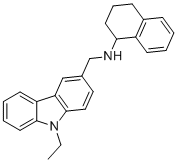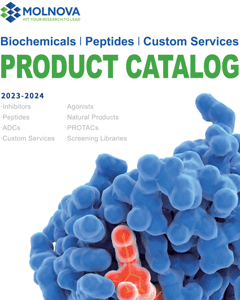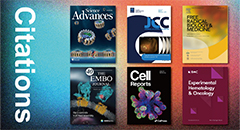
PJ-68
CAS No. 352544-59-3
PJ-68( PJ68 )
Catalog No. M14202 CAS No. 352544-59-3
PJ-68 is a potent, selective inhibitor of arginine methyltransferase PRMT5 with IC50 of 517 nM.
Purity : >98% (HPLC)
 COA
COA
 Datasheet
Datasheet
 HNMR
HNMR
 HPLC
HPLC
 MSDS
MSDS
 Handing Instructions
Handing Instructions
| Size | Price / USD | Stock | Quantity |
| 100MG | Get Quote | Get Quote |


|
| 200MG | Get Quote | Get Quote |


|
| 500MG | Get Quote | Get Quote |


|
| 1G | Get Quote | Get Quote |


|
Biological Information
-
Product NamePJ-68
-
NoteResearch use only, not for human use.
-
Brief DescriptionPJ-68 is a potent, selective inhibitor of arginine methyltransferase PRMT5 with IC50 of 517 nM.
-
DescriptionPJ-68 is a potent, selective inhibitor of arginine methyltransferase PRMT5 with IC50 of 517 nM, shows no inhibitory activity against type I PRMT family members ( (PRMT1, 3, 4, 6, and 8); markedly decreases BCR-ABL mRNA levels in both CD34+CD38-cells and CD34+CD38+ cells, reduces survival and self-renewal capacity of CML CD34+ cells, increases p15INK4B and p27KIP1 but not p16INK4A and p57KIP2 expression; reduces growth of CML LSCs and prolongs survival of CML mice.
-
In Vitro——
-
In Vivo——
-
SynonymsPJ68
-
PathwayChromatin/Epigenetic
-
TargetHMTase
-
RecptorHMTase
-
Research Area——
-
Indication——
Chemical Information
-
CAS Number352544-59-3
-
Formula Weight354.497
-
Molecular FormulaC25H26N2
-
Purity>98% (HPLC)
-
Solubility——
-
SMILES——
-
Chemical NameN-((9-ethyl-9H-carbazol-3-yl)methyl)-1,2,3,4-tetrahydronaphthalen-1-amine
Shipping & Storage Information
-
Storage(-20℃)
-
ShippingWith Ice Pack
-
Stability≥ 2 years
Reference
1. Jin Y, et al. J Clin Invest. 2016 Oct 3;126(10):3961-3980.
2. Kaushik S, et al. Leukemia. 2018 Feb;32(2):499-509.
molnova catalog



related products
-
PFI-2
A first-in-class, potent and selective inhibitor of SETD7 methyltransferase with Ki app/IC50 of 0.33/2 nM.
-
MI-2-2
MI-2-2 is a potent inhibitor of the menin-MLL interaction that binds to menin with low nanomolar affinity (Kd=22 nM).
-
EPZ6438
EPZ-6438 is a potent, and selective EZH2 inhibitor with Ki and IC50 of 2.5 nM and 11 nM in cell-free assays.



 Cart
Cart
 sales@molnova.com
sales@molnova.com


